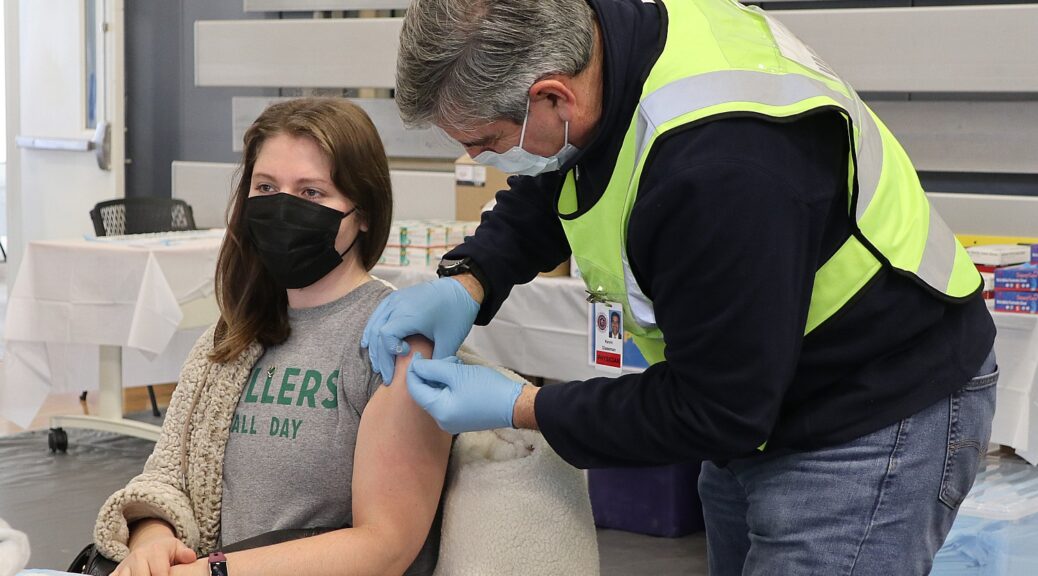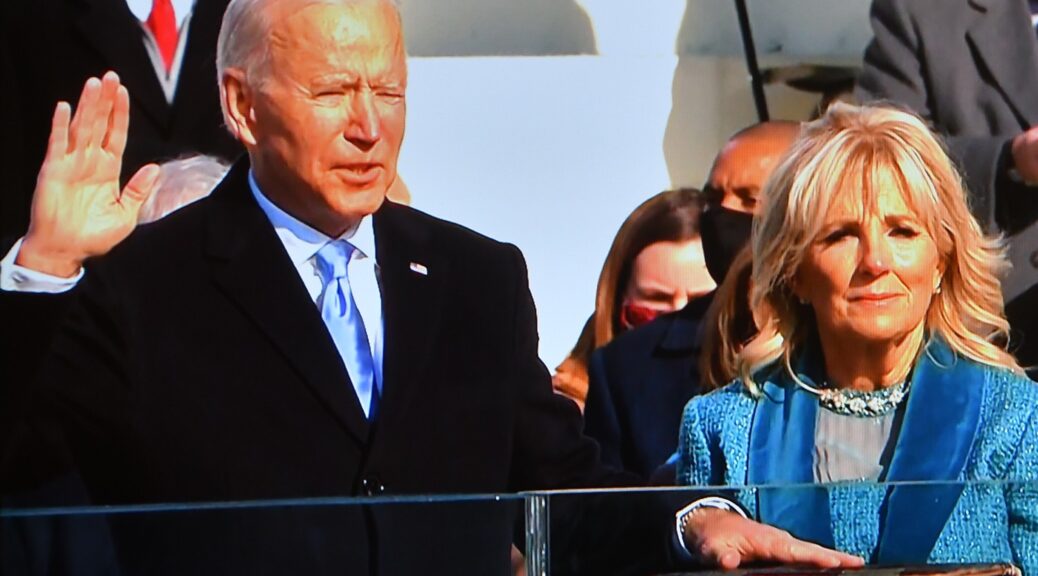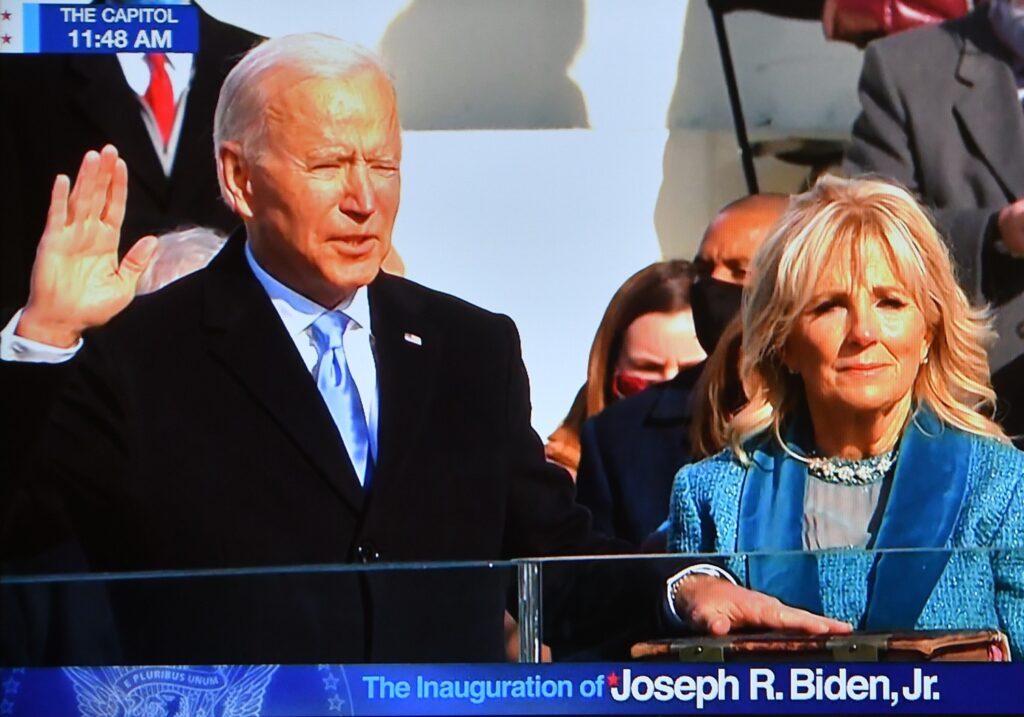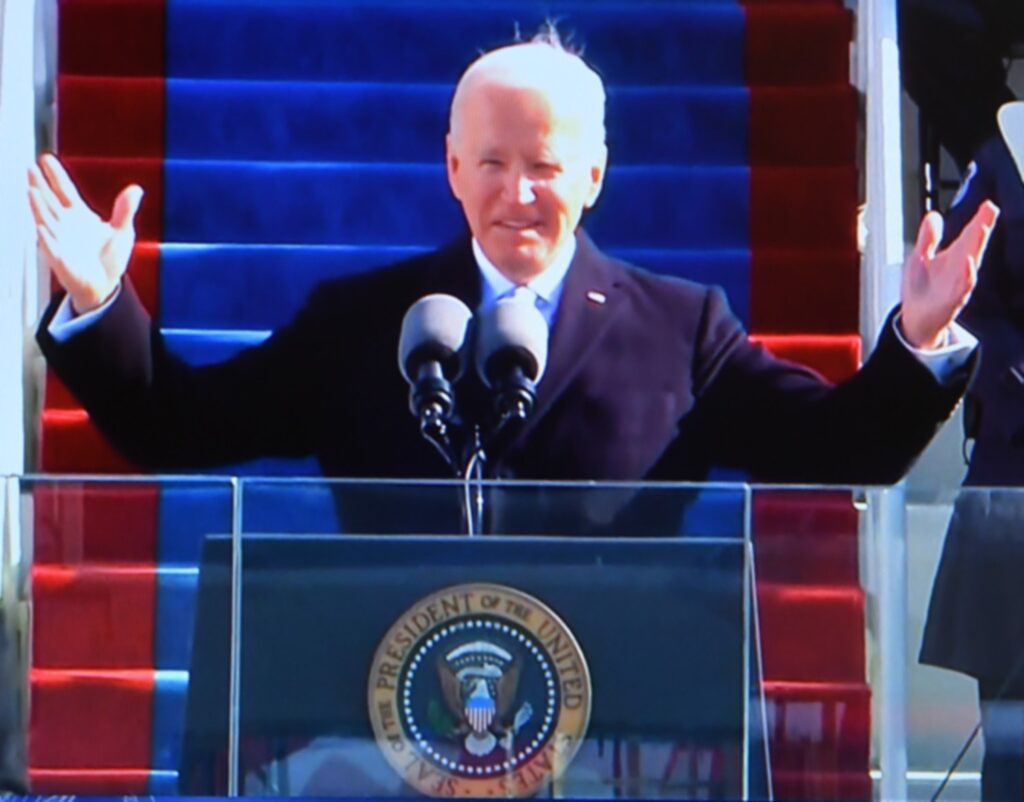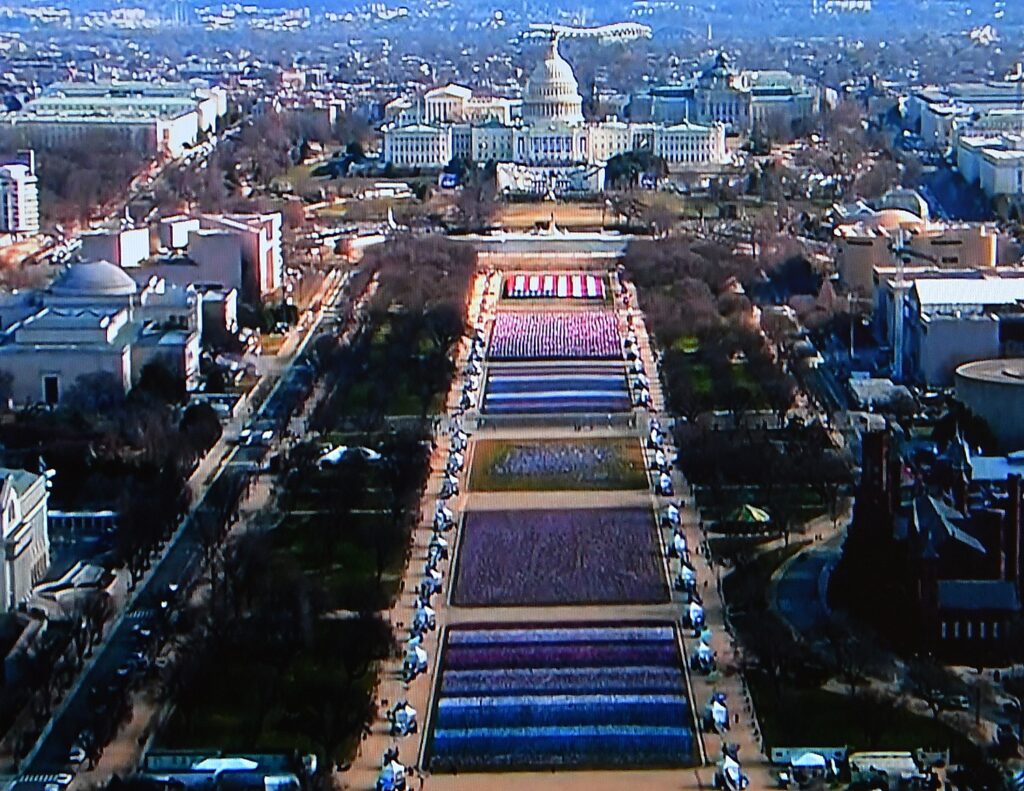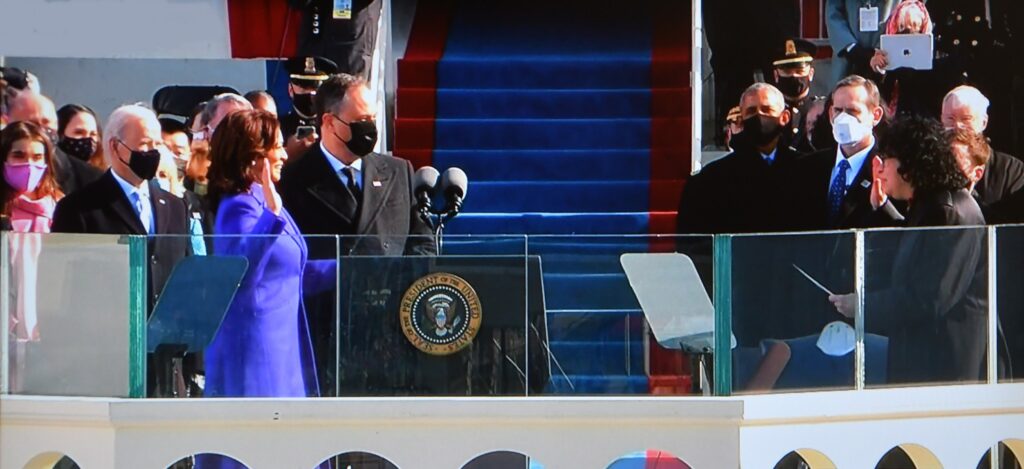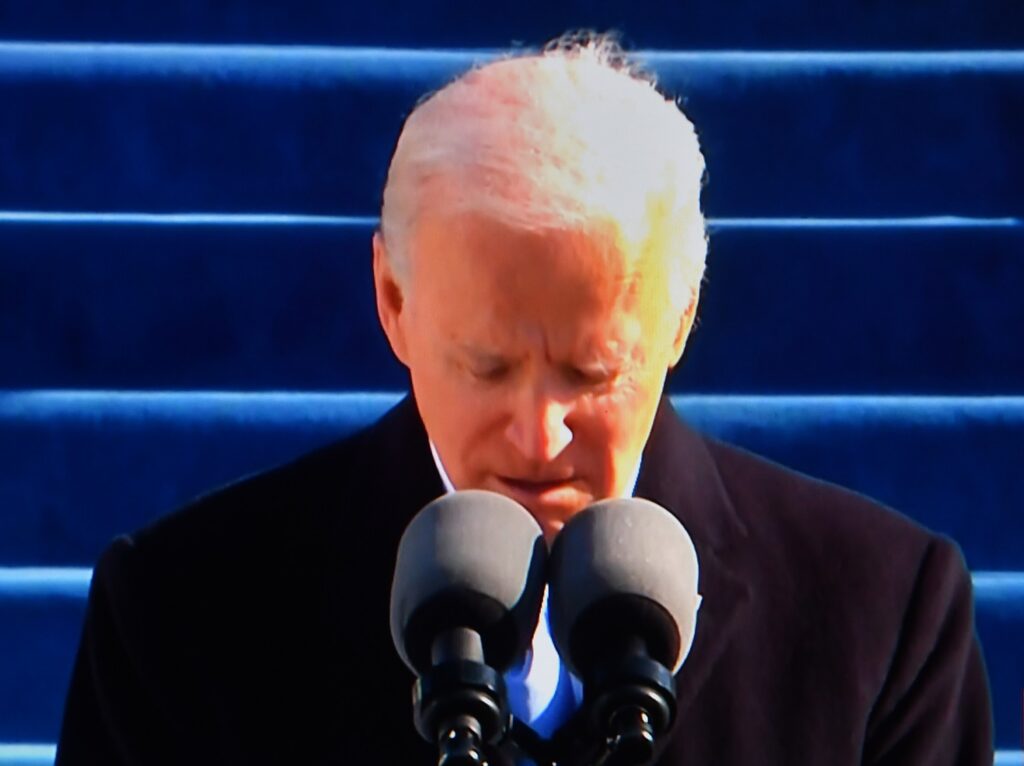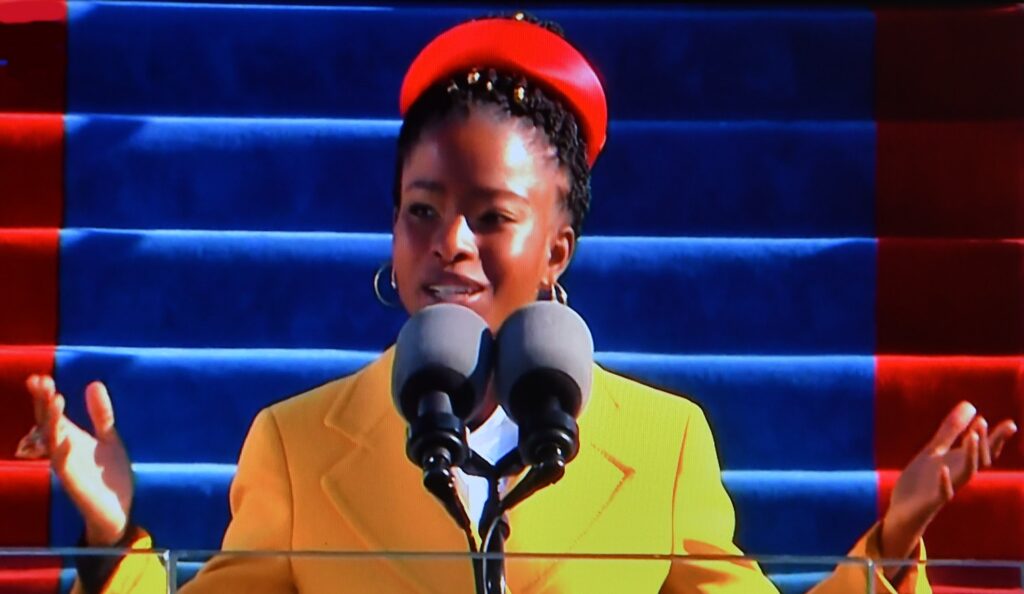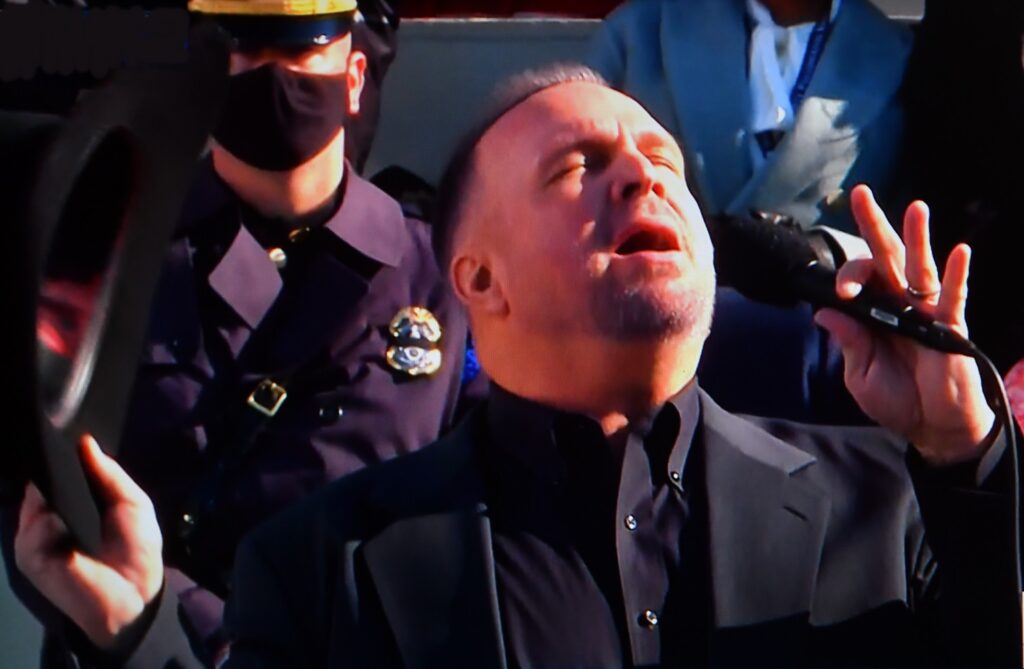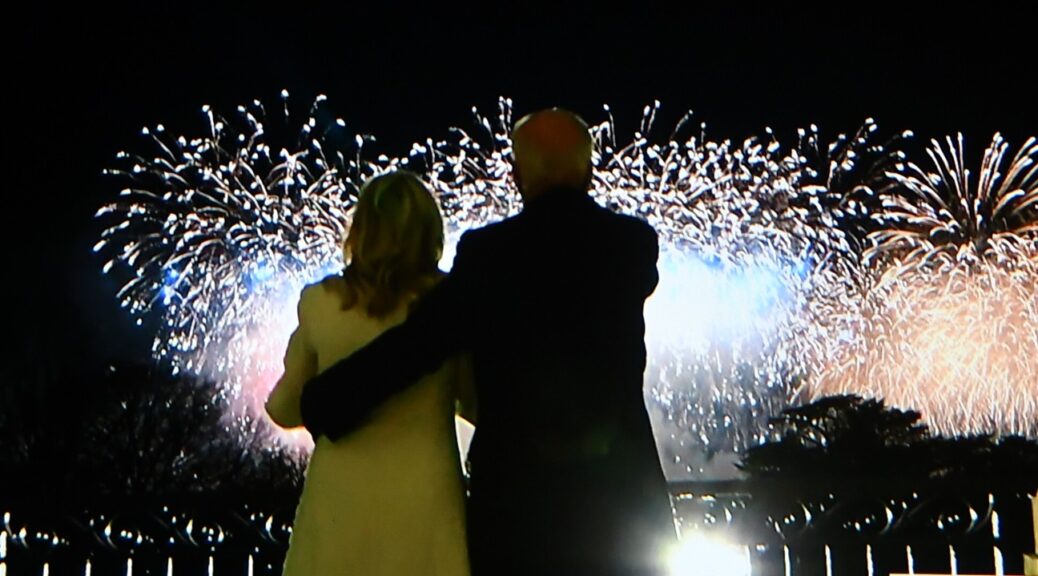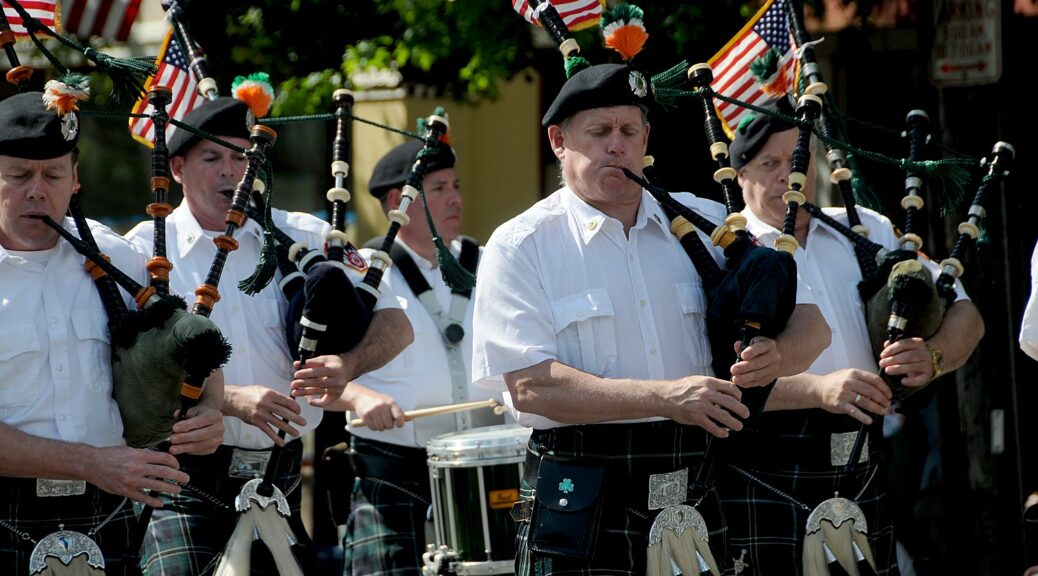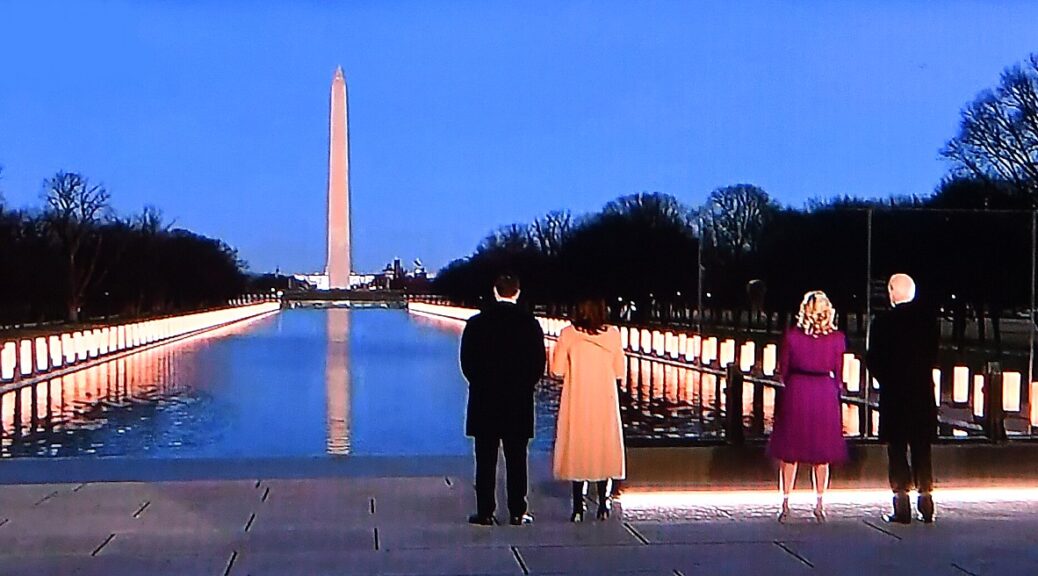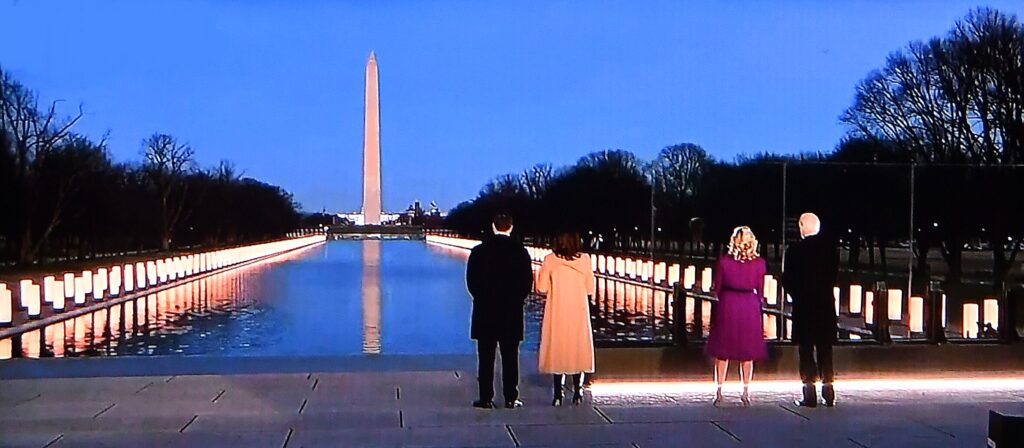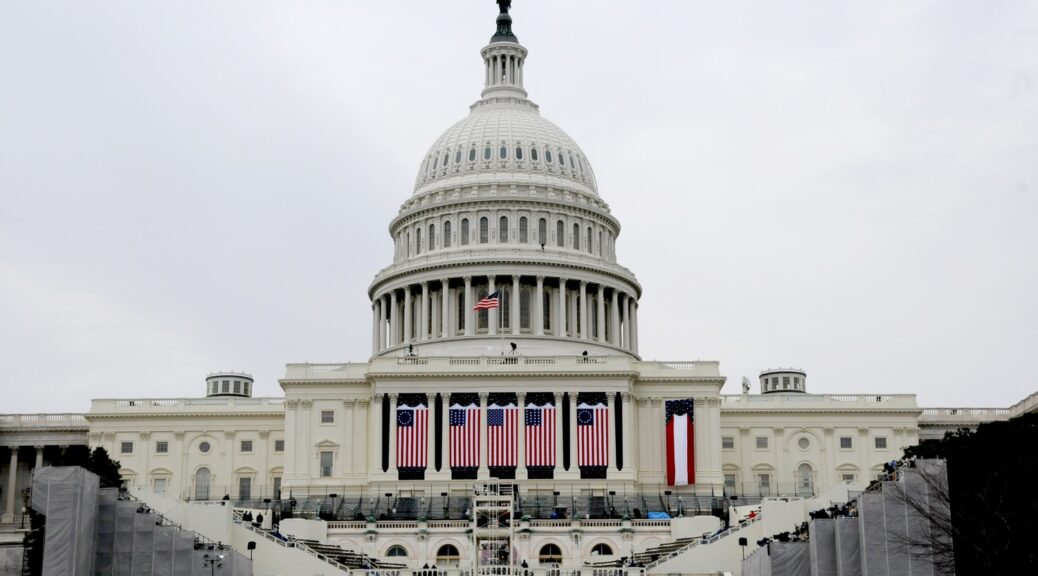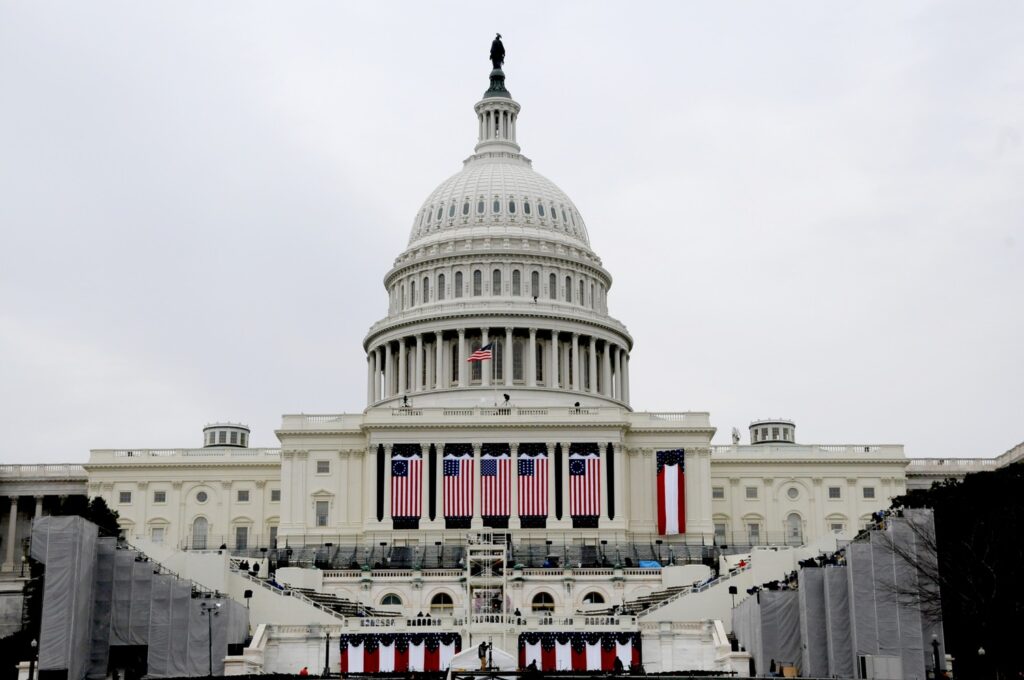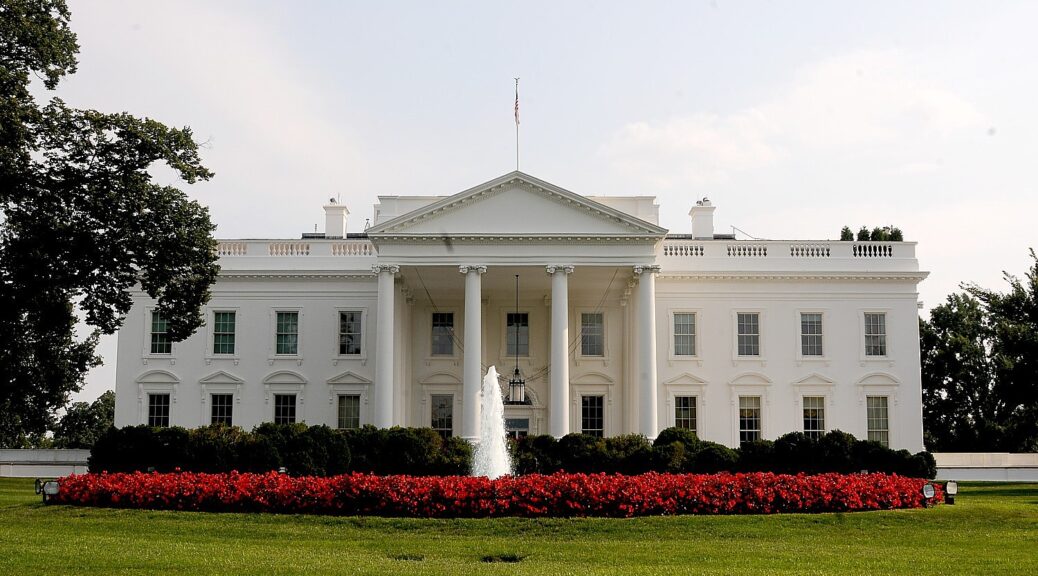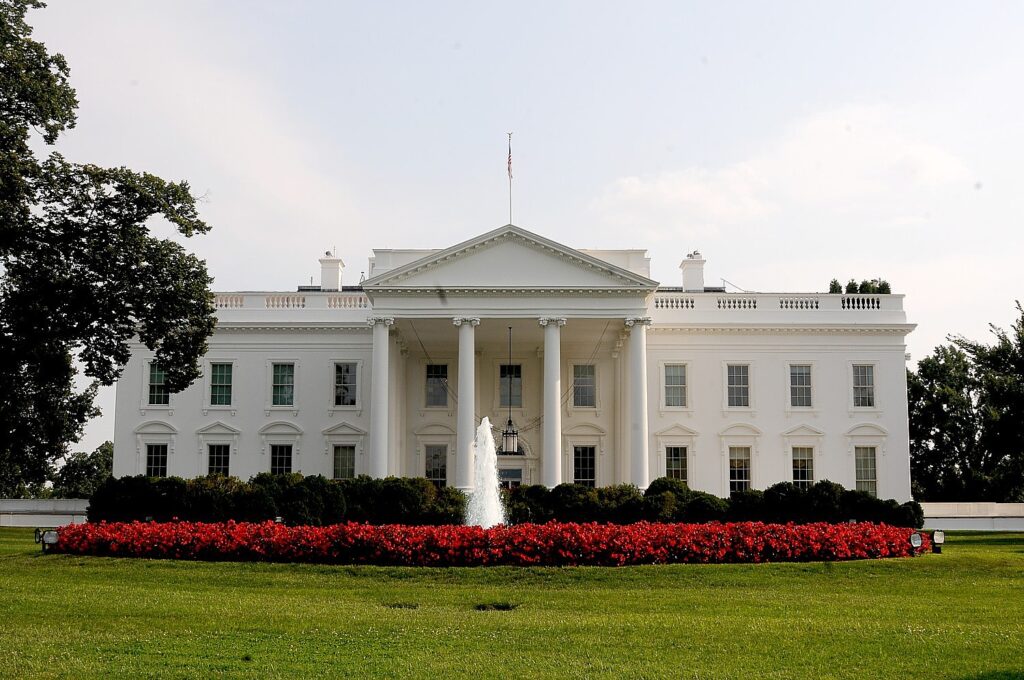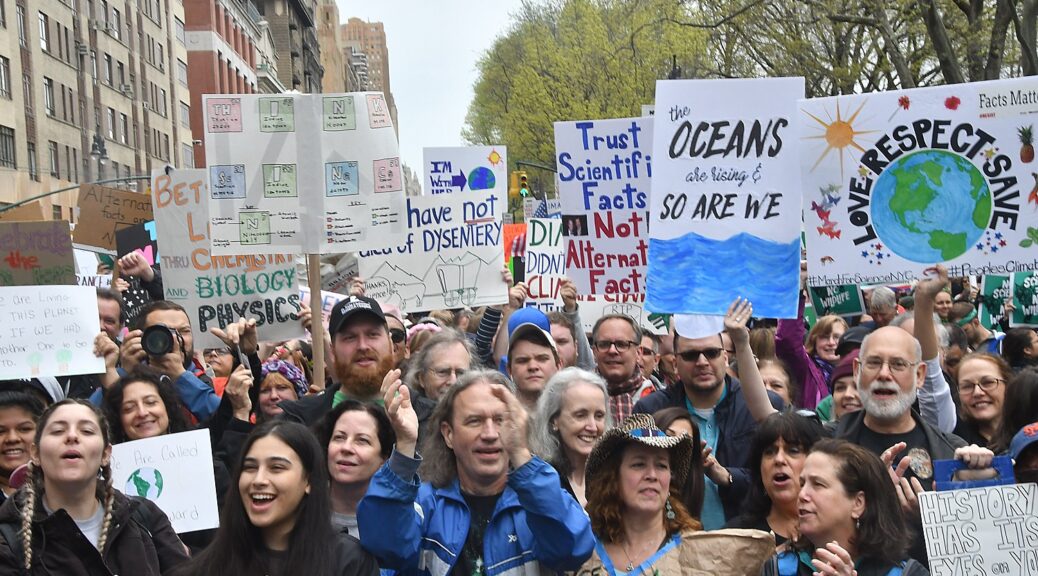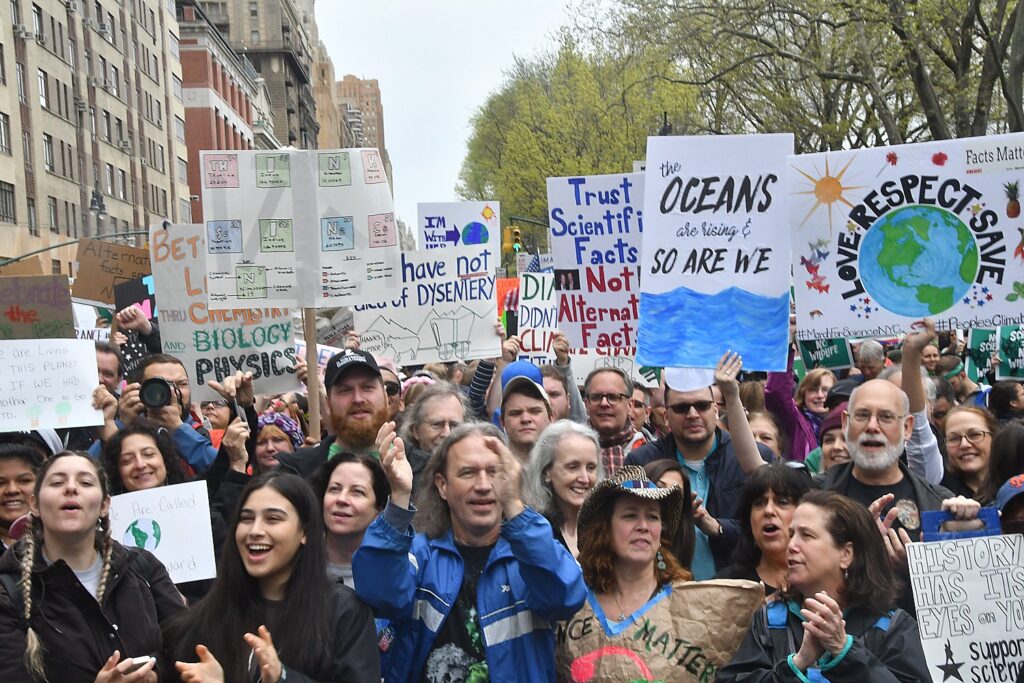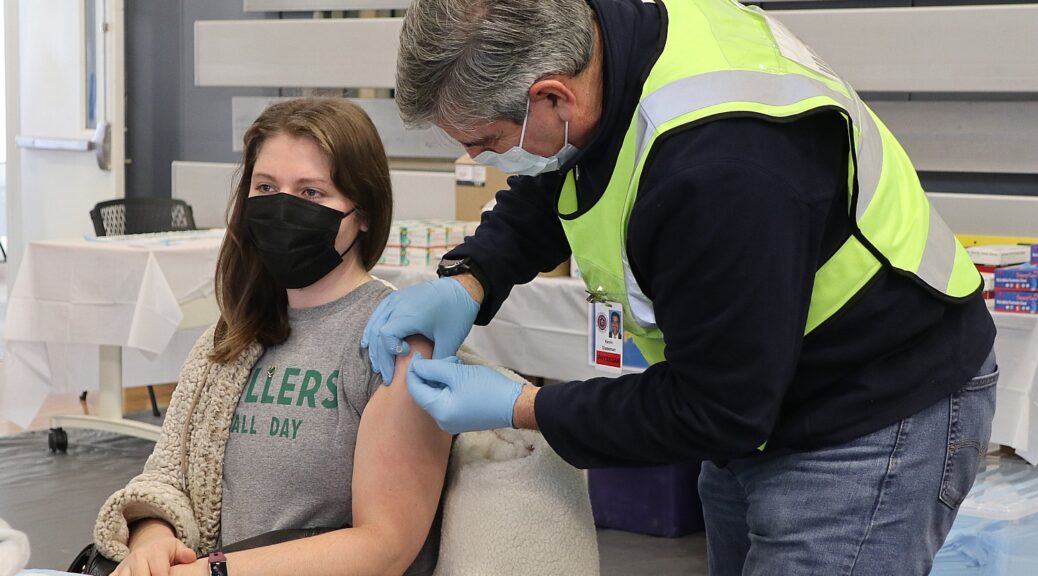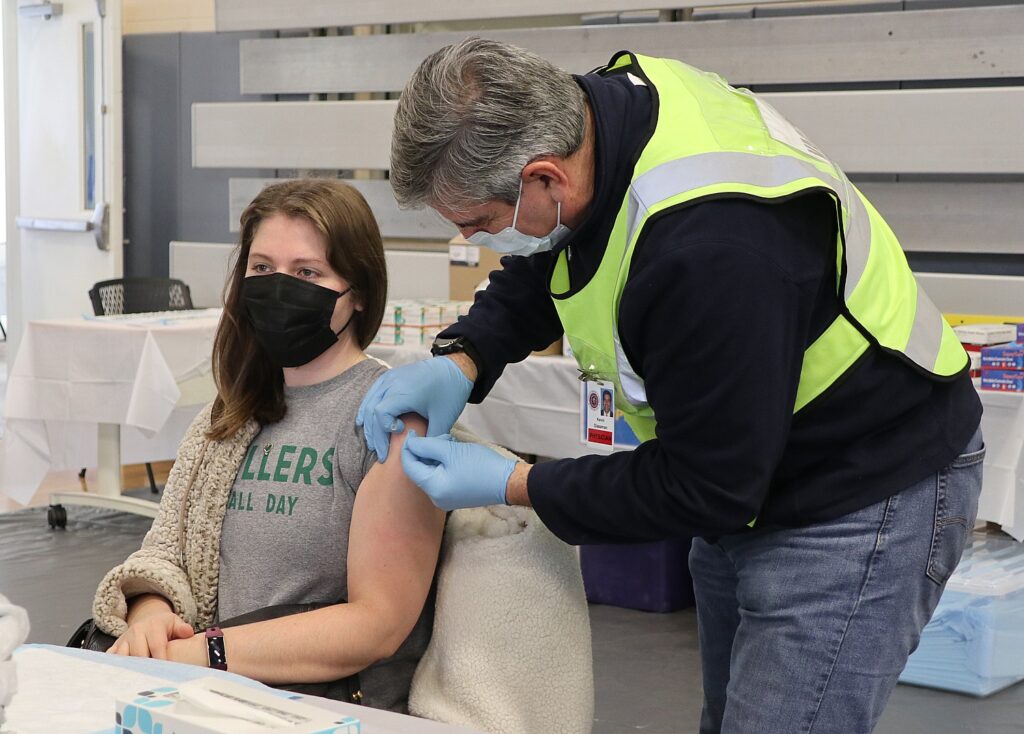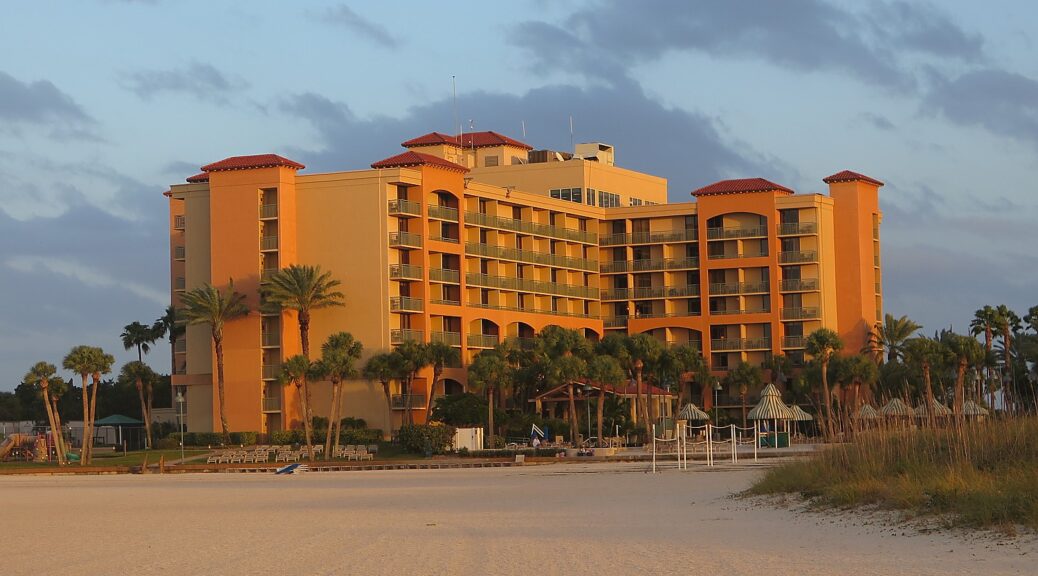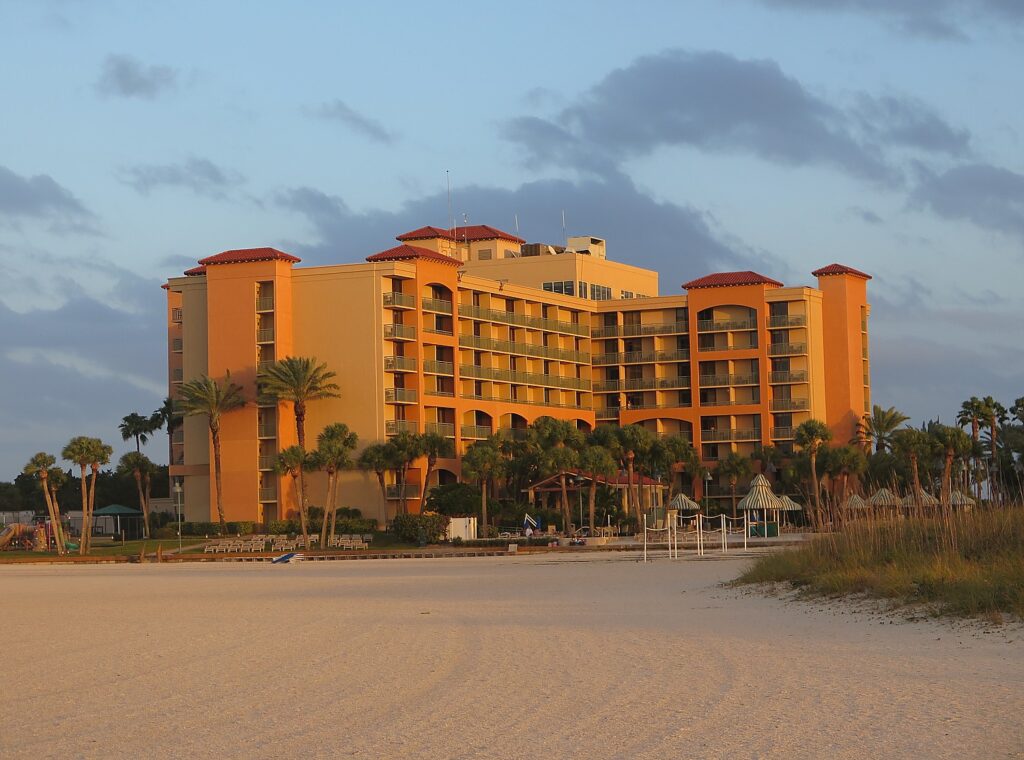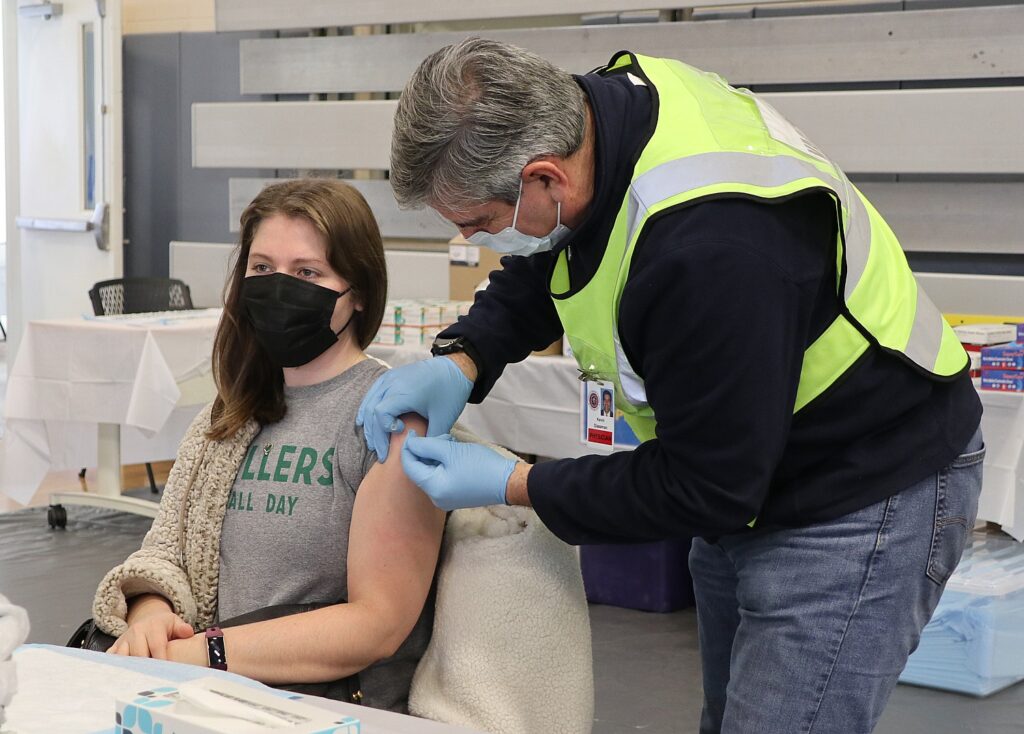
Surprise! There wasn’t any Trump Administration plan to distribute COVID-19 vaccines. And those supplies that were supposedly held in reserve? The jokes on you – there aren’t any. The incoming Biden Administration – locked out of meaningful engagement during the transition – finds it has to basically create a vaccine distribution program almost from scratch, while holding to a goal of administering 100 million doses in the first 100 days. As each day continues to post new record numbers of deaths (well over 400,000 now, with as many as 100,000 more deaths by February forecast), hospitalizations choking state’s health care systems, the number of infections soaring over 22 million and new strains that are even more transmissible, Biden’s first Executive Order, signed within minutes of entering the White House, was to require mask-wearing at federal facilities and in interstate commerce, while launching a national, patriotic campaign to mask-up for 100 days. And the first order of business for the Biden Administration has been to introduce, for the first time, a national strategy to get a handle on the coronavirus pandemic that has so devastated lives and livelihoods.
Here it is: –Karen Rubin/news-photos-features.com
National Strategy for the COVID-19 Response
and Pandemic Preparedness
January 21, 2021
Executive Summary
We can and will beat COVID-19. America deserves a response to the COVID-19 pandemic that is driven by science, data, and public health — not politics. Through the release of the National Strategy for the COVID-19 Response and Pandemic Preparedness, the United States is initiating a coordinated pandemic response that not only improves the effectiveness of our fight against COVID-19, but also helps restore trust, accountability and a sense of common purpose in our government.
On January 9, 2020, the World Health Organization announced that there were 59 cases of coronavirus-related pneumonia. Just one year later, the United States has experienced over 24 million confirmed COVID-19 cases and over 400,000 COVID-19 deaths. America has just 4% of the world’s population, but 25% of the world’s COVID-19 cases and 20% of all COVID-19 deaths. And our nation continues to experience the darkest days of the pandemic, with record numbers of cases, hospitalizations and deaths. Over 77,000 Americans lost their lives to COVID-19 in December, and across our nation businesses are closing, hospitals are full, and families are saying goodbye to their loved ones remotely.
The National Strategy provides a roadmap to guide America out of the worst public health crisis in a century. It outlines an actionable plan across the federal government to address the COVID-19 pandemic, including twelve initial executive actions that will be issued by President Biden during his first two days in office:
The National Strategy is organized around seven goals:
- Restore trust with the American people.
- Mount a safe, effective, and comprehensive vaccination campaign.
- Mitigate spread through expanding masking, testing, treatments, data, health care workforce, and clear public health standards.
- Immediately expand emergency relief and exercise the Defense Production Act.
- Safely reopen schools, businesses, and travel while protecting workers.
- Protect those most at risk and advance equity, including across racial, ethnic and rural/urban lines.
- Restore U.S. leadership globally and build better preparedness for future threats.
To execute on the National Strategy, the White House will establish a COVID-19 Response Office responsible for coordinating the pandemic response across all federal departments and agencies. Through implementation of the National Strategy, the United States will make immediate progress on the seven goals. To monitor outcomes, the National Strategy will establish a data-driven, evidence-based approach to evaluating America’s progress in the fight against COVID-19.
The federal government cannot solve this crisis alone. Full implementation of the National Strategy for COVID-19 will require sustained, coordinated, and complementary efforts of the American people, as well as groups across the country, including State, local, territorial, and Tribal governments; health care providers; businesses; manufacturers critical to the supply chain; civic, religious and civil rights organizations; and unions. It will also require a global effort to contain the virus and advance health security.
America has always risen to the challenge and we will do so now. In collaboration with the people of this country, the United States government will lead an effective COVID-19 response that gets us back to our lives and loved ones. As we’ve seen during this pandemic, we can’t solve our problems as a divided nation. The only way we come through this is together as fellow Americans and as the United States of America.
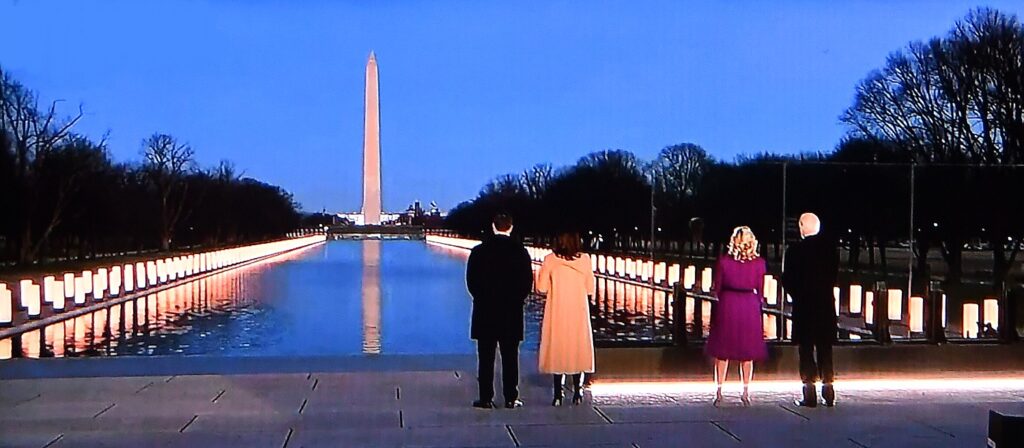
Goal 1: Restore trust with the American people.
The federal government should be the source of truth for the public to get clear, accessible, and scientifically accurate information about COVID-19. To rebuild the trust of the American people, the National Strategy will signal clear public leadership and a commitment to a robust whole-of-government response that puts science first. The federal government will be transparent with the American people, maintaining an open line of communication with the public and all stakeholders. To continue to restore trust, the United States will:
Establish a national COVID-19 response structure where decision-making is driven by science and equity. The Biden-Harris Administration has developed a unified plan to rebuild expert leadership across the government and regain the trust of the American public. As part of the strategy, on his first day in office, President Biden issued Executive Order Organizing and Mobilizing the U.S. Government to Provide a Unified And Effective Response to Combat COVID-19 and to Provide United States Leadership on Global Health and Security establishing a White House COVID-19 national response structure to coordinate across the U.S. Government and restoring the White House Directorate on Global Health Security and Biodefense established by the Obama-Biden Administration. The COVID-19 Response office will establish clear lines of communications with all governors, state public health officials and immunization managers, and local leaders.
Conduct regular expert-led, science-based public briefings. The federal government will conduct regular, expert-led, science-based public briefings and release regular reports on the state of the pandemic. Experts and scientists at the U.S. Centers for Disease Control and Prevention (CDC) will also develop clear, evidence-based, metric-driven public health guidance and effectively and frequently communicate and distribute guidance and updates to the American people.
Publicly share data around key response indicators. Metrics and metric-driven public health guidance will be essential to controlling the pandemic. President Biden will issue Executive Order Ensuring a Data-Driven Response to COVID-19 and Future High Consequence Public Health Threats directing steps to enhance federal agencies’ collection, production sharing, and analysis of, and collaboration with respect to, data to support an equitable COVID-19 response and recovery. As further detailed in National Strategy Goals Two, Three, and Six, the federal government will track a range of performance measures and data including cases, testing, vaccinations, and hospital admissions, and will make real-time information readily available to the public and to policymakers at the federal, state, and local level. The CDC will also maintain a public dashboard tracking COVID-19 cases at the county level, so that Americans can gauge the level of transmission in their own communities to make their own informed choices.
Engage the American people. The federal government cannot solve this crisis alone. It will take regular engagement with the public, state and local leaders, the private sector, unions, community volunteers, and health care providers to guide policy and implementation. The Administration will prioritize outreach to state and local governments, the public and private sectors, vulnerable communities, students, workers, and community leaders, using input from these stakeholders to drive the government’s COVID-19 response.
Lead science-first public health campaigns. The Administration will lead world-class public education campaigns — covering topics like masking, testing, vaccinations and vaccine hesitancy — designed with diversity and inclusivity in mind, including communications in multiple languages, to maximize reach and effectiveness. The campaigns will be coordinated, across national, state, and local levels, and engage with the private and public sector. They will be anchored by science and fact-based public health guidance. The Administration will work to counter misinformation and disinformation by ensuring that Americans are obtaining science-based information.
Goal 2: Mount a safe, effective, comprehensive vaccination campaign.
The United States will spare no effort to ensure Americans can get vaccinated quickly, effectively, and equitably. The federal government will execute an aggressive vaccination strategy, focusing on the immediate actions necessary to convert vaccines into vaccinations, including improving allocation, distribution, administration, and tracking. Central to this effort will be additional support and funding for state, local, Tribal, and territorial governments — and improved line of sight into supply — to ensure that they are best prepared to mount local vaccination programs. At the same time, the federal government will mount an unprecedented public campaign that builds trust around vaccination and communicates the importance of maintaining public health measures such as masking, physical distancing, testing, and contact tracing even as people receive safe and effective vaccinations. To mount a safe, effective, comprehensive vaccination campaign, the United States will:
Ensure the availability of safe, effective vaccines for the American public. The national vaccination effort will be one of the greatest operational challenges America has ever faced. To ensure all Americans can be vaccinated quickly, the President has developed a plan for expanding vaccine manufacturing and purchasing COVID-19 vaccine doses for the U.S. population by fully leveraging contract authorities, including the Defense Production Act; deploying onsite support to monitor contract manufacturing operations; and purchasing additional FDA-authorized vaccines to deliver as quickly as possible. The effort includes prioritizing supplies that could cause bottlenecks, including glass vials, stoppers, syringes, needles, and the “fill and finish” capacity to package vaccine into vials.
Accelerate getting shots into arms and get vaccines to the communities that need them most. The success of the national vaccination effort will depend on reaching communities across the United States. To achieve this, the federal government will take a series of steps to simplify and strengthen the allocation and distribution process. In order to expand the supply available to states, the Administration will end the policy of holding back significant levels of doses, instead holding back a small reserve and monitoring supply to ensure that everyone receives the full regimen as recommended by the FDA. The United States will accelerate the pace of vaccinations by encouraging states and localities to move through the priority groups more quickly — expanding access to frontline essential workers and individuals over the age of 65, while staying laser-focused on working to ensure that the highest-risk members of the public, including those in congregate facilities, can access the vaccine where and when they need it. The Administration will also improve the allocation process by providing states and localities with clear, consistent projections to inform their planning. Through it all, the United States will work to ensure that the vaccine is distributed quickly, effectively and equitably, with a focus on making sure that high-risk and hard-to-reach communities are not left behind.
Create as many venues as needed for people to be vaccinated. The federal government — in partnership with state and local governments — will create as many venues for vaccination as needed in communities and settings that people trust. This includes, but is not limited to federally run community vaccination centers, in places like stadiums and conference centers, federally-supported state and locally operated vaccination sites in all 50 states and 14 territories, pharmacies and retail stores, federal facilities like Veterans Affairs hospitals, community health centers, rural health clinics, critical access hospitals, physician offices, health systems, urgent care centers, and mobile and on-site occupational clinics.
Focus on hard-to-reach and high-risk populations. As the United States accelerates the pace of vaccinations nationwide, we remain focused on building programs to meet the needs of hard-to-reach and high-risk populations, and meeting communities where they are to make vaccinations as accessible and equitable as possible. The federal government will deploy targeted strategies to meet the needs of individuals at increased risk and others who need to take extra precautions, according to the CDC, as well as the communities hardest hit by this pandemic. Local public health officials will play a critical role.
Fairly compensate providers, and states and local governments for the cost of administering vaccinations. Fairly compensating providers, and state and local governments for the costs of vaccine administration will be critical to expanding vaccination participation. President Biden will work with Congress to expand the Federal Medicaid Assistance Percentage (FMAP) to 100 percent for vaccinations of Medicaid enrollees—with the goal of alleviating state costs for administration of these vaccines and supporting states in their work to meet the needs of their communities. The Department of Health and Human Services will ask the Centers for Medicare & Medicaid Services to consider whether current payment rates for vaccine administration are appropriate or whether a higher rate may more accurately compensate providers. The federal government will fund vaccine supply and will greatly expand funding for vaccine administration by allowing state and local governments to reimburse vaccination administration expenses through the FEMA Disaster Relief Fund and by ensuring that workforce and equipment expenses for state and local-run sites are also eligible.
Drive equity throughout the vaccination campaign and broader pandemic response. The federal government will drive equity in vaccinations by using demographic data to identify communities hit hardest by the virus and supporting them, ensuring no out-of-pocket costs for vaccinations, and making sure vaccines reach those communities. Working with state, local, and community-based organizations and trusted health care providers, like community health centers, will be central to this effort.
Launch a national vaccinations public education campaign. The United States will build public trust through an unprecedented vaccination public health campaign at the federal, State, Tribal, territorial, local and community level. The public education campaign will support vaccination programs, address vaccine hesitancy, help simplify the vaccination process for Americans, and educate the public on effective prevention measures. The campaign will be tailored to meet the needs of diverse communities, get information to trusted, local messengers, and outline efforts to deliver a safe and effective vaccine as part of a national strategy for beating COVID-19.
Bolster data systems and transparency for vaccinations. The operational complexity of vaccinating the public will make robust data and its use in decision-making related to vaccinations more important than ever. The federal government, with CDC, will track distribution and vaccination progress, working hand-in-hand with states and localities to support their efforts. The Administration will build on and strengthen the federal government’s approach to data collection related to vaccination efforts, removing impediments and developing communication and technical assistance plans for jurisdictions and providers. The Administration, through HHS and other federal partners, will rely on data to drive decision-making and the national vaccinations program.
Monitor vaccine safety and efficacy. The Administration will ensure that scientists are in charge of all decisions related to vaccine safety and efficacy. The FDA will also continue to honor its commitment to make relevant data on vaccine safety and efficacy publicly available and to provide opportunities for public, non-governmental expert input. Through expanded and existing systems, the CDC and FDA will ensure ongoing, real-time safety monitoring. Through it all, the Administration will communicate clearly with the American public to continue to build trust around the vaccine and its benefits for individuals, their families and communities.
Surge the health care workforce to support the vaccination effort. A diverse, community-based health care workforce is essential to an effective vaccination program. The United States will address workforce needs by taking steps to allow qualified professionals to administer vaccines and encourage states to leverage their flexibility fully to surge their workforce, including by expanding scope of practice laws and waiving licensing requirements as appropriate.
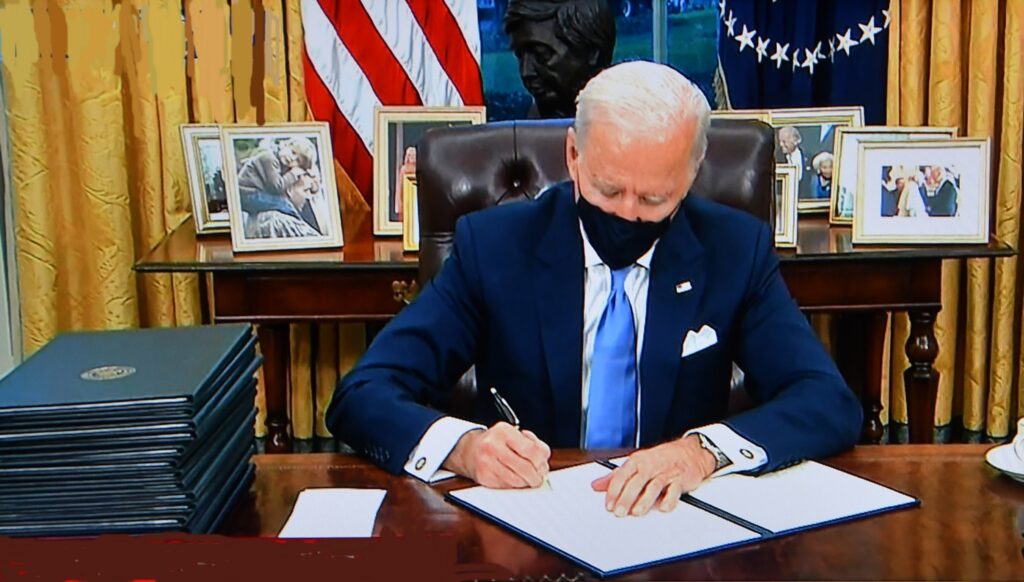
Goal 3: Mitigate spread through expanding masking, testing, treatment, data, workforce, and clear public health standards.
A comprehensive national public health effort to control the virus — even after the vaccination program ramps up — will be critical to saving lives and restoring economic activity. The federal government will partner with state, local, Tribal, and territorial leaders to implement a cohesive strategy to significantly reduce the spread of COVID-19 and release clear public health guidance to the public about what to do and when, including implementing mask mandates; expanding testing; strengthening the public health workforce; modernizing data collection and reporting capabilities for COVID-19 and future epidemics; and providing equitable access to treatment and clinical care. To mitigate the spread of COVID-19 through clear public health standards, the United States will:
Implement masking nationwide by working with governors, mayors, and the American people. The President has asked the American people to do what they do best: step up in a time of crisis and wear masks. He has issued Executive Order Protecting the Federal Workforce and Requiring Mask-Wearing which directs compliance with CDC guidance on masking and physical distancing in federal buildings, on federal lands, and by federal employees and contractors. Additionally, the President will issue Executive Order Promoting COVID-19 Safety in Domestic and International Travel which directs applicable agencies to take immediate action to require mask-wearing on some airplanes, trains, and certain other forms of public transportation in the United States. He has called on governors, public health officials, mayors, business leaders, and others to implement masking, physical distancing, and other CDC public measures to control COVID-19.
Scale and expand testing. To control the COVID-19 pandemic and safely reopen schools and businesses, America must have wide-spread testing. A national testing strategy is a cornerstone to reducing the spread of COVID-19 and controlling outbreaks, and clear federal guidance and a unified national approach to implementation are essential. The President will issue Executive Order Establishing the National Pandemic Testing Board and Ensuring a Sustainable Public Health Workforce for COVID-19 and Other Biological Threats which establishes the COVID-19 Pandemic Testing Board to oversee implementation of a clear, unified approach to testing. The federal government will expand the rapid testing supply and double test supplies and increase testing capacity. The Administration will also increase onshore test manufacturing, fill testing supply shortfalls, enhance laboratory capacity to conduct testing over the short- and long-term, and expand surveillance for hotspots and variants.
Effectively distribute tests and expand access to testing. The federal government will support school screening testing programs to help schools reopen. The Administration will also stand up a dedicated CDC Testing Support Team, fund rapid test acquisition and distribution for priority populations, work to spur development and manufacturing of at-home tests and work to ensure that tests are widely available. Through Executive Order Establishing the National Pandemic Testing Board and Ensuring a Sustainable Public Health Workforce for COVID-19 and Other Biological Threats the President will direct agencies to facilitate testing free of charge for those who lack health insurance and to clarify insurers’ obligation to cover testing. The federal government will also provide testing protocols to inform the use of testing in congregate settings, schools, and other critical areas and among asymptomatic individuals. Further, technical assistance will support more widespread adoption of testing to improve timely diagnosis and public confidence in the safety of settings like schools.
Prioritize therapeutics and establish a comprehensive, integrated COVID-19 treatment discovery and development program. Effective treatments for COVID-19 are critical to saving lives. The federal government will establish a comprehensive, integrated, and coordinated preclinical drug discovery and development program, with diverse clinical trials, to allow therapeutics to be evaluated and developed rapidly in response to COVID-19 and other pandemic threats. This includes promoting the immediate and rapid development of therapeutics that respond to COVID-19 by developing new antivirals directed against the coronavirus family, accelerating research and support for clinical trials for therapeutics in response to COVID-19 with a focus on those that can be readily scaled and administered, and developing broad-spectrum antivirals to prevent future viral pandemics. President Biden will issue Executive Order Improving and Expanding Access to Care and Treatment for COVID-19 which also outlines steps to bolster clinical care capacity, provide assistance to long-term care facilities and intermediate care facilities for people with disabilities, increase health care workforce capacity, expand access to programs designed to meet long-term health needs of patients recovering from COVID-19, and support access to safe and effective COVID-19 therapies for those without coverage.
Develop actionable, evidence-based public health guidance. CDC will develop and update public health guidance on containment and mitigation that provides metrics for measuring and monitoring the incidence and prevalence of COVID-19 in health care facilities, schools, workplaces, and the general public, including metric-driven reopening guidance that the federal government communicates widely. Informed by up-to-date national and state data, the CDC will provide and update guidance on key issues such as physical distancing protocols, testing, contact tracing, reopening schools and businesses, and masking. The CDC also will provide focused guidance for older Americans and others at higher risk, including people with disabilities.
Expand the U.S. public health workforce and increase clinical care capacity for COVID-19.
In addition to supporting the surge in health care workers for vaccination efforts detailed in Goal Two, the federal government will also build and support an effective public health workforce to fight COVID-19 and the next public health threat. As part of the President’s commitment to provide 100,000 COVID-19 contact tracers, community health workers, and public health nurses, the Administration will establish a U.S. Public Health Jobs Corps, provide support for community health workers, and mobilize Americans to support communities most at-risk. The United States will also provide technical support for testing, contact tracing, and other urgent public health workforce needs to better prepare for public health crises.
Improve data to guide the response to COVID-19. Federal agencies will make increased use of data to guide the public health response against COVID-19. To that end, Agencies will collect, aggregate, share, and analyze non-personally identifiable data, and take steps to make it publicly available and in a machine-readable form to enhance COVID-19 response efforts. And the federal government will facilitate evidence-based decision-making through focused data-based projects. These efforts will require collaboration with state, local, Tribal, and territorial governments to aggregate and analyze data for critical decisions to track access to vaccines and testing, reopen schools and businesses, address disparities in COVID-19 infections and health outcomes, and enhance critical monitoring capacity where needed. In addition, critical response activities such as workforce mobilization and vaccination appointment scheduling may require new technology solutions. The federal government will provide technical support to ensure that these systems meet mission critical requirements to support a robust response.
Goal 4: Immediately expand emergency relief and exercise the Defense Production Act.
It’s past time to fix America’s COVID-response supply shortage problems for good. The United States will immediately address urgent supply gaps, which will require monitoring and strengthening supply chains, while also steering the distribution of supplies to areas with the greatest need. As new vaccines, testing protocols, and treatments are developed, they will also need to be manufactured in sufficient supply. To respond to this unprecedented operational challenge, the President is immediately expanding emergency relief by giving state and local governments the support they need. To make vaccines, tests, Personal Protective Equipment (PPE), and other critical supplies available for the duration of the pandemic, the President has directed the use of all available legal authorities, including the Defense Production Act (DPA), instructing departments and agencies to expand the availability of critical supplies, to increase stockpiles so that PPE is available to be used in the recommended safe manner, and to start to fill all supply shortfalls immediately. To expand emergency relief and strengthen the supply chain, the government will:
Increase emergency funding to states and bolster the Federal Emergency Management Agency (FEMA) response. The President will issue a Presidential Memorandum entitled Extend Federal Support to Governors’ Use of National Guard to Respond to COVID-19 and to Increase Reimbursement and other Assistance Provided to States, directing FEMA to fully reimburse states for the cost of National Guard personnel and emergency supplies, including emergency supplies like PPE for schools and child care providers.
Fill supply shortfalls by invoking the Defense Production Act (DPA). The United States is taking immediate action to fill supply shortfalls for vaccination supplies, testing supplies, and PPE. The President will issue Executive Order A Sustainable Public Health Supply Chain which directs agencies to fill supply shortfalls using all available legal authorities, including the DPA, and the United States has identified twelve immediate supply shortfalls that will be critical to the pandemic response, including shortages in the dead-space needle syringes available to administer the vaccine. The President has directed relevant agencies to exercise all appropriate authorities, including the DPA, to accelerate manufacturing, delivery, and administration to meet shortfalls in these twelve categories of critical supplies, including taking action to increase the availability of supplies like N95 masks, isolation gowns, nitrile gloves, polymerase chain reaction (PCR) sample collection swabs, test reagents, pipette tips, laboratory analysis machines for PCR tests, high-absorbency foam swabs, nitrocellulose material for rapid antigen tests, rapid test kits, low dead-space needles and syringes, and all the necessary equipment and material to accelerate the manufacture, delivery, and administration of COVID-19 vaccine.
Identify and solve urgent COVID-19 related supply gaps and strengthen the supply chain.The A Sustainable Public Health Supply Chain executive order will also direct federal agencies to fill supply shortfalls using all available legal authorities.The federal government will focus on the near-term goal of building a stable, secure, and resilient supply chain with increased domestic manufacturing in four key critical sectors:
- Antigen and molecular-based testing;
- PPE and durable medical equipment;
- Vaccine development and manufacturing; and
- Therapeutics and key drugs.
The federal government will immediately focus on procuring supplies that will be critical to control the spread of COVID-19 by initiating contracts, entering into purchase commitments, making investments to produce supplies and expanding manufacturing capacity.
Secure the pandemic supply chain and create a manufacturing base in the United States. To respond more effectively to this crisis, and ensure that the United States is able to respond more quickly and efficiently to the next pandemic, we need a resilient, domestic public health industrial base. The U.S. Government will not only secure supplies for fighting the COVID-19 pandemic, but also build toward a future, flexible supply chain and expand an American manufacturing capability where the United States is not dependent on other countries in a crisis. To this end, A Sustainable Public Health Supply Chain will direct the development of a new Pandemic Supply Chain Resilience Strategy.
Improve distribution and expand availability of critical materials. After conducting a review of existing COVID-19 and related pandemic supply chain distribution plans and working in consultation with state and regional compacts, the United States will coordinate distribution plans, prioritizing areas of highest-risk and highest need, and set up a structure to improve the distribution of critical materials. To work toward expanding the affordability and accessibility of supplies, A Sustainable Public Health Supply Chain will direct the Department of Defense (DOD), HHS, and Department of Homeland Security (DHS) to develop recommendations to address the pricing of COVID-19 supplies. The federal government will also reduce the opacity of the market for critical supplies and supply chains by clearly and rapidly communicating with states, health care providers, and manufacturers about federal interventions.
Goal 5: Safely reopen schools, businesses, and travel, while protecting workers.
Reopening schools, businesses, travel, and our economy will require major, unified federal investments in rapid testing, an expanded rapid response public health workforce, clear guidance and protections, and support for people to stay home when they are infected to stop the spread of COVID-19. At the same time that the United States takes immediate steps to achieve an overall decrease in COVID-19 spread, it will also support the safe operation of schools, businesses, and travel. To protect workers and safely reopen, schools, businesses, and travel, the United States will:
Implement a national strategy to support safely reopening schools. The United States is committed to ensuring that students and educators are able to resume safe, in-person learning as quickly as possible, with the goal of getting a majority of K-8 schools safely open in 100 days. The President will issue Executive Order Supporting the Reopening and Continuing Operation of Schools and Early Childhood Education Providers which directs a national strategy for safely reopening schools, including requiring the Departments of Education and HHS to provide guidance on safe reopening and operating, and to develop a Safer Schools and Campuses Best Practices Clearinghouse to share lessons learned and best practices from across the country. Presidential Memorandum Extend Federal Support to Governors’ Use of National Guard to Respond to COVID-19 and to Increase Reimbursement and other Assistance Provided to States will restore full reimbursement for eligible costs necessary to support safe school reopening through the FEMA Disaster Relief Fund and the President has called on Congress to provide at least $130 billion in dedicated funding to schools, $350 billion in flexible state and local relief funds that will help districts avoid lay-offs and close budget gaps, and additional resources so that schools can safely reopen, including funds to implement screening testing. The Administration will release a handbook that helps schools and local leaders implement the precautions and strategies necessary for safe reopening. It will also work with states and local school districts to support screening testing in schools, including working with states to ensure an adequate supply of test kits.
Support safe operations at child care centers and at-home providers. With enrollments down and costs up due to COVID-19 precautions, child care providers are struggling to stay afloat while providing vital services to their communities. Due to increased costs and lower enrollment, a recent survey of child care providers showed that most child care providers expect that they will close within a few months without relief, or are uncertain how long they can stay open.[1] If not addressed, child care providers will close and millions of parents will be left to make devastating choices between caring for their children and working to put food on the table. President Biden has called on Congress to provide $25 billion in emergency stabilization to support hard-hit child care providers through the pandemic. These funds would help providers pay rent, utilities, and payroll, as well as cover pandemic-related costs like personal protective equipment, ventilation supplies, smaller group sizes, and alterations to physical spaces that improve safety. The President has also called on Congress to provide $15 billion to help families struggling to afford child care.
Support equitable reopening and operation in higher education. College enrollment for high school graduates was down more than 20% in 2020 compared to 2019, and students from low-income families are nearly twice as likely to report canceling their plans to attend college. Reopening and keeping colleges open is critical to ensuring that all Americans have a shot at a college credential — but it must be done safely, to protect the health of students, faculty, staff, and the broader community. To support colleges through the pandemic, President Biden has requested that Congress provide an additional $35 billion in emergency stabilization funds for higher education.
Protect workers and issue stronger worker safety guidance. It is critical that the federal government protect the health and safety of America’s workers and take swift action to prevent workers from contracting COVID-19 in the workplace. The President will issue Executive Order Protecting Worker Health and Safety which directs the Occupational Safety and Health Administration (OSHA) to issue updated guidance on COVID-19 worker protections. It also directs OSHA and the Mine Safety and Health Administration (MSHA) to consider whether emergency temporary standards, including with respect to mask-wearing, are necessary. President Biden is taking steps to cover workers not typically covered by OSHA or MSHA by directing agencies like the Department of Transportation to keep workers safe. He has also called on Congress to extend and expand emergency paid leave; to allow OSHA to issue standards covering a broad set of workers, like many public workers on the frontlines; to provide additional funding for worker health and safety enforcement, and to provide grant funding for organizations to help keep vulnerable workers healthy and safe from COVID-19.
Provide guidance and support to safely open businesses. To maintain safe operations during the pandemic, businesses need to know how to change their practices to protect employees and customers. As the conditions of the pandemic continue to evolve and more Americans get vaccinated, the business community needs clear information from the federal government on what to expect and how to adapt their operations. Many businesses affected by the pandemic–particularly the smallest ones–need additional support to adjust their physical spaces and purchase PPE and supplies. The United States will immediately work to prioritize funds under the recent COVID relief package to the companies hardest hit by COVID-19 and in compliance with public health restrictions, ensuring that small businesses have the funds they need to operate safely. Further, the Small Business Administration will work with the Department of Labor to disseminate updated OSHA guidance on worker safety and support businesses in implementing the updated guidance.
Promote Safe Travel. Ensuring that people can safely travel will be critical for families and to jumpstarting the economy, which is why the President will issue an executive order that requires mask-wearing on certain public modes of transportation and at ports of entry to the United States. For international air travel, Executive Order Promoting COVID-19 Safety in Domestic and International Travel will require a recent negative COVID-19 test result prior to departure and quarantine on arrival, consistent with CDC guidelines. The Executive Order will also direct agencies to develop options for expanding public health measures for domestic travel and cross-border land and sea travel and calls for incentives to support and encourage compliance with CDC guidelines on public transportation.
Goal 6: Protect those most at risk and advance equity, including across racial, ethnic and rural/urban lines.
The COVID-19 pandemic has exposed and exacerbated severe and pervasive health inequities among communities defined by race, ethnicity, geography, disability, sexual orientation/gender identity, and other factors. Addressing this pandemic’s devastating toll is both a moral imperative and pragmatic policy. The federal government will address disparities in rates of infection, illness and death. Each of the goals of this National Strategy include comprehensive actions that will address these disparities and advance equity. In addition, the United States will:
Establish the COVID-19 Health Equity Task Force. The President will issue Executive Order Ensuring an Equitable Pandemic Response and Recovery which establishes a high-level task force to address COVID-19 related health and social inequities and help coordinate an equitable pandemic response and recovery. The Task Force will convene national experts on health equity and provide recommendations on how to mitigate COVID-19 health inequities.
Increase data collection and reporting for high risk groups. The fragmented and limited availability of data by race, ethnicity, geography, disability and other demographic variables delays recognition of risk and a targeted response. President Biden will issue the Executive Order Ensuring a Data-Driven Response to COVID-19 and Future High-Consequence Public Health Threats directing federal agencies to expand their data infrastructure to increase collection and reporting of health data for high risk populations, while reaffirming data privacy. Using these data, the federal government will identify high-risk communities, track resource distribution and evaluate the effectiveness of the response. Finally, HHS will optimize data collection from public and private entities to increase the availability of data by race, ethnicity, geography, disability, and other demographic variables, as feasible.
Ensure equitable access to critical COVID-19 PPE, tests, therapies and vaccines. The continued surge of COVID-19 highlights the critical importance of meaningful access to PPE, tests, therapies, and vaccines to prevent spread and reduce illness and death in high-risk populations and settings. The federal government will center equity in its COVID-19 response, providing PPE, tests, vaccines, therapeutics and other resources in a fair and transparent way. A targeted, stakeholder- and data-informed vaccination communication campaign will be launched to encourage vaccination in all communities. Additionally, the CDC will work with states and localities to update their pandemic plans. Finally, through prioritizing diverse and inclusive representation in clinical research and strengthening enforcement of anti-discrimination requirements, the federal government will increase access to effective COVID-19 care and treatment.
Expand access to high quality health care. The federal government will work to expand affordable coverage to increase access to care during this pandemic, and the Task Force will provide recommendations to align federal incentives with improved clinical outcomes. Specific actions include efforts to increase funding for community health centers, provide greater assistance to safety net institutions, strengthen home- and community-based services, expand mental health care, and support care and research on the effects of long COVID.
Expand the clinical and public health workforce, including community-based workers. In order to assure equitable PPE distribution, testing, contact tracing, social support for quarantine and isolation and vaccination, there must be sufficient workforce to serve the communities in greatest need. The federal government will augment the health workforce, including with community based workers, as outlined in Goal Three above, to help fill this critical gap. The federal government will create a United States Public Health Workforce Program of new community based workers to assist with testing, tracing and vaccination. Additionally, it will deploy federal workers to assist with the COVID-19 response in under-resourced areas.
Strengthen the social service safety net to address unmet basic needs. With millions of families already struggling pre-pandemic to meet basic needs, including food, housing and transportation, COVID-19 has exacerbated these challenges. These challenges contribute to difficulties by many to adhere to public health guidance regarding social distancing and quarantine/isolation. This Administration is committed to addressing these needs in multiple ways, including providing paid sick leave, child care support, and rental assistance, with requested Congressional appropriations. Additionally, it will undertake agency actions to designate COVID-19 health equity leads and extend eligibility and enrollment flexibilities for select programs during the pandemic, as well work with community-based, multi-sector organizations to align health and social interventions.
Support communities most at-risk for COVID-19. The federal government is committed to supporting populations that are most vulnerable to COVID-19. Whether residing in congregate settings (such as prisons, nursing and group homes, and homeless shelters), serving as essential workers, living as a person with a disability, or bearing the burden of chronic medical conditions, these vulnerable populations are disproportionately composed of people of color. The CDC will develop and update clear public health guidance for such high-risk populations and settings to further minimize the risk of COVID infection, and work with states to update their pandemic plans to incorporate such guidance as necessary.
Goal 7: Restore U.S. leadership globally and build better preparedness for future threats.
U.S. international engagement to combat COVID-19, promote health, and advance global health security is urgent to save lives, promote economic recovery, and develop resilience against future biological catastrophes. America’s withdrawal from the world stage has impeded progress on a global COVID-19 response and left the U.S. more vulnerable to future pandemics. The Biden-Harris Administration will restore America’s role in leading the world through global crises, advancing global health security and the Global Health Security Agenda, including by supporting the international pandemic response effort, providing humanitarian relief and global health assistance, and building resilience for future epidemics and pandemics. The President will issue a National Security Directive that directs steps to restore U.S. leadership globally and build better preparedness. In addition, the United States of America will:
Restore the U.S. relationship with the World Health Organization and seek to strengthen and reform it. The World Health Organization (WHO) is essential to coordinating the international response to COVID-19 and improving the health of all people. On his first day in office, the President sent letters informing the UN Secretary-General and the WHO Director General of his decision to cease the previous Administration’s process of withdrawal from the WHO and meet its financial obligations. The United States is participating in the WHO Executive Board meeting this month, and will take actions to strengthen and reform the WHO.
Surge the international COVID-19 public health & humanitarian response. The United States will commit to multilateralism in the international COVID-19 public health and humanitarian response. The President will restore U.S. leadership on the global COVID-19 response and health security, laying out an active role for the United States in surging the health and humanitarian response to COVID-19, and supporting global vaccine distribution and research and development for treatments, tests, and vaccines. The United States will support the Access to COVID-19 Tools (ACT) Accelerator, join the COVID-19 Vaccines Global Access (COVAX) Facility, and seek to strengthen other existing multilateral initiatives, such as the Coalition for Epidemic Preparedness Innovations; Gavi, the Vaccine Alliance; and the Global Fund to Fight AIDS, Tuberculosis, and Malaria. The United States will also take steps to enhance humanitarian relief and support for the capacity of the most vulnerable communities to prevent, detect, respond to, mitigate, and recover from impacts of COVID-19, such as food insecurity and gender-based violence.
Restore U.S. leadership to the international COVID-19 response and advance global health security and diplomacy. The United States will promote sustainable global health and global health security, rebuild health security alliances, elevate U.S. efforts to support the Global Health Security Agenda, and revitalize U.S. leadership. The United States will advance global health security financing, promote efforts to harmonize crisis response and early warning for public health emergencies, and strengthen global pandemic supply chains. The United States will also work within the UN Security Council and with partners to strengthen multilateral public health and humanitarian cooperation on the COVID-19 response, global institutions to combat disease, and a global health security architecture to prevent, detect, and respond to future biological threats.
Build better biopreparedness and expand resilience for biological threats. The United States is committed to strengthening U.S. biopreparedness and capacity to counter COVID-19 and future biological threats. The President has immediately restored the White House National Security Council Directorate for Global Health Security and Biodefense, originally established by the Obama-Biden administration. He has reconstituted White House and Administration-wide infrastructure for monitoring and responding to emerging biological risks. And to improve the United States’ preparedness, the Administration will work to secure funding and Congressional support to establish an integrated, National Center for Epidemic Forecasting and Outbreak Analytics to modernize global early warning and trigger systems to prevent, detect, and respond to biological threats. The United States will also review and seek to strengthen our pandemic supply chain, public health workforce, medical countermeasure development and distribution, bioeconomic investment and technology-related risks.
_______
[1] https://www.naeyc.org/sites/default/files/globally-shared/downloads/PDFs/our-work/public-policy-advocacy/naeyc_policy_crisis_coronavirus_december_survey_data.pdf

